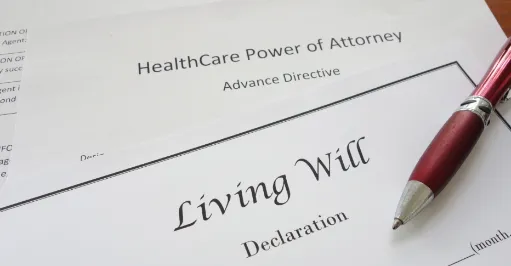Are you amazed by how quickly time flies? As we enter a new year, thinking about making changes and setting resolutions is natural. One of the most beneficial resolutions you can make is prioritizing organizing your finances and estate plan. Many tend to procrastinate on estate planning and financial organization until it becomes urgent. How frequently do we find articles outlining end-of-year financial and estate planning steps? So why not begin that journey today? Take the first step towards a secure and organized financial future.
Start the year off right by organizing your finances and affairs. Give yourself peace of mind and guarantee that your family will be provided during unexpected emergencies. Begin your resolution by creating a timeline and breaking the tasks into manageable steps.
Step 1. Take Charge of Your Financial Life. Getting your financial life in order can seem overwhelming, but it can be tackled by following simple steps. Start by creating a comprehensive list of all your assets, including bank and investment accounts, property, and personal belongings. Collect this paperwork for homes, boats, and other big assets and store them safely and securely. Then, gather important documents like wills, insurance policies, deeds, and loan information for major assets. Review them for any changes you want to make; keep these documents secure and ensure they are organized and up-to-date. It’s also important to let a trusted individual know where they are stored.
Step 2. Review Emergency Funds. Review and Secure Your Emergency Funds in a High-Yield Savings Account. You should generally have 3-6 months of savings set aside for financial security, and a high-yield savings account is a smart choice to keep them safe. With FDIC insurance, your money is protected within the prescribed limits.
Not only are high-yield savings accounts safer than regular savings or checking accounts, but they also offer better interest rates. While the stock market might yield higher returns, a high-yield savings account ensures you won’t lose ground to inflation.
Forbes magazine provides an excellent emergency fund calculator to help you determine the ideal amount to set aside. Additionally, seek guidance from a financial advisor to optimize your emergency fund strategy.
Step 3. Review Key Estate Planning Documents. An incomplete estate plan can create confusion and potential disputes among heirs when you pass. Make sure your estate plan includes these essential documents and or decisions:
(i) Last will and testament. Often simply referred to as a “will,” a last will and testament outlines your final wishes and instructions for distributing your assets and managing your affairs after you pass. Even if you have trust based estate plan, you will still need a will.
(ii) Revocable Trust. A revocable trust is a flexible estate planning tool that offers numerous advantages. One key benefit is privacy, as assets transferred to the trust avoid probate, providing a confidential way to pass on wealth. Additionally, a revocable trust allows the grantor to maintain control over their assets during their lifetime, as it can be altered or revoked if circumstances change. This flexibility extends to incapacity planning, ensuring a smooth transition without court involvement. Unlike a will, a revocable trust immediately occurs upon creation, allowing for efficient asset management and distribution. Overall, a revocable trust is a versatile and efficient strategy for estate planning, providing control, privacy, and a streamlined process for asset transfer.
(iii)Beneficiary designations. Make sure to assign beneficiaries for 401(k) and IRA accounts, pensions, and life insurance policies; these designations are current.
(iv) Health Care Proxy. A health care proxy appoints a person to make medical decisions for you, on your behalf, should you become mentally incapable of making them yourself. A living often accompanies it will or advanced healthcare directive, which instructs doctors and family to use or withhold life support in certain circumstances.
(v) Power of attorney. This assigns an individual to manage your assets if you become incapacitated.
(vi) Funeral instructions. Specify whether you’d like a burial or a cremation and the type of arrangements you prefer. If you have a burial plot or made other arrangements, you must share this with your loved ones.
(vii) Digital Assets. In the digital age, estate planning goes beyond physical assets, emphasizing the need to account for digital assets. Including details about your online presence, such as social media accounts, digital files, cryptocurrencies, and online subscriptions, ensures a comprehensive estate plan. Failing to address these digital assets can lead to complications for your heirs. By proactively considering and documenting your online footprint, you safeguard your digital legacy and streamline the management of your entire estate for a more thorough and efficient transition.
Step 4. Consider Tax and Estate Moves to Take this Year.
(i) Consider Estate Exemption will reset in 2026. –– The federal estate and gift tax exemption (the combined amount you can give away to beneficiaries other than your spouse or charities during life and at death without paying gift or estate tax) has increased to $13.61 million per person as of January 1, 2024 (up from $12.92 million last year) Married couples have a combined exemption of $27.220 million. The federal exemption amount, however, is set to automatically reduce to $5 million indexed for inflation (estimated at $7 million) on January 1, 2026, unless Congress takes action. New York State’s estate tax exemption amount for 2024 is $6,940,000, up from $6,580,000 in 2023.
ii) Consider Making Gifts. The federal annual exclusion amount for gifts made in 2024 has been increased to $18,000, up from $17,000 in 2023 due to inflation. This is the highest amount of gifts one may give to any number of individuals each year without using any of their federal estate and gift tax exemption amounts. A married couple can give away $36,000/year per recipient. So a family with two children and two grandchildren can make gifts of up to $152,000.00 without using up their Federal or State Exemption.
However, New York State has a clawback rule pertaining to gifts made within three years of an individual’s death. This rule allows the state to reclaim a portion of the gifted assets for estate tax purposes, treating them as if they were still part of the deceased individual’s estate. Essentially, if substantial gifts were made in the three-year window leading up to the person’s death, the value of those gifts might be included in the calculation of the estate tax liability.
(iii) Review Tax-loss Harvesting. If you have not done so already, analyzing your portfolio is important to determine if you can offset taxable income by harvesting capital losses. You may also have tax-loss carryforwards that can reduce your 2024 tax bill. Ask your adviser to see if tax-loss harvesting may improve your situation.
(iv) Plan to Contribute to your pre-tax retirement accounts. Keep track of your 2024 retirement contributions for your 401(k)s, 403(b)s and SIMPLE IRAs so that you are on pace to maximize contributions. If you are age 50 or older, you can contribute an extra catch-up amount. While you must do this by Dec. 31 of 2024 for these accounts, you have until April 15, 2025 (and April 15, 2024 (for tax year 2023) (and potentially until Oct. 15, if you file an extension) to make traditional Roth and SEP IRA contributions.
(vi) Review your RMDs. If you turn 73 this year, you must begin taking RMDs. A significant tax is applied if you fail to take the RMD on time, so this is one of the most important items to make sure it gets checked off the list.
(vii) Fund investing accounts for your dependents. If you plan on making contributions to investment accounts for your children, 2024 is a good time to review whether they are funded to the desired levels. Consider a custodial Roth IRA. Tax-free growth: contributions can be withdrawn tax-free. Parents can make contributions only if their child earned income for the year. The current maximum annual contribution is $6,500, or the total of a child’s earned income for the year — whichever is less. 529, college savings plans. High contribution limits; withdrawals for school-related expenses are tax-free. Gifts to 529 plans can total up to $17,000 per individual or as much as $85,000 if the parent chooses the five-year election. This election allows parents to supercharge their savings and treats this large lump sum as if it were spread over five years.
Organizing your estate and finances early in the year is a proactive and strategic approach to ensure a smooth and comprehensive plan. Give us a call or book a call with us. Starting early is the best way to review and update documents, address any changes in assets or family circumstances, and implement any new laws or regulations that may impact your plan. By tackling these tasks early on, you provide yourself with ample time to consult with your advisors, make informed decisions, and avoid last-minute stress. This proactive approach safeguards your financial well-being and provides peace of mind, knowing that your estate is thoughtfully organized and prepared for whatever the year may bring.
.
.






